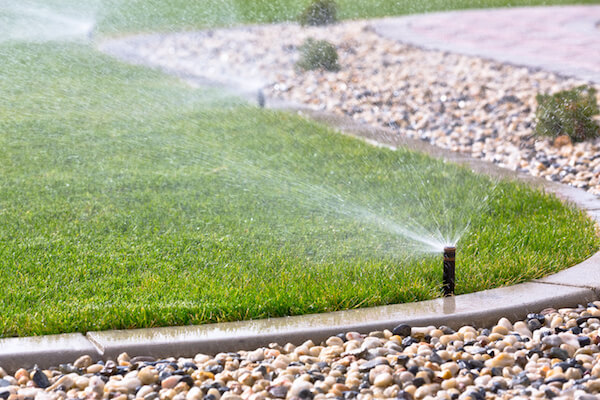
Calibrate Your Home Lawn Sprinkler System
Few things make home lawn care easier than an automatic irrigation system — that is, once it is properly calibrated. Because both underwatering and overwatering take a toll on grass, it is imperative to find the “Goldilocks” rate for each lawn. The process of calibrating the sprinkler system often reveals developing or full-blown problems, so the homeowner can take action before the turf displays areas of stress. If the lawn already suffers from damage due to improper watering, calibrating the system should bring it relief.
Although no two lawns are exactly alike, the following information can help owners set the sprinkling system according to the yard’s unique needs.
The Can Test
The first step calls for hard data on how much water the lawn receives in any given location. Straight-sided cans such as tuna or cat food tins work well for this test, although any straight-sided container will do. They should be placed around the zone in question to catch the water. Ten or twelve cans distributed over the average-sized residential zone should suffice.
After a fifteen-minute zone run, viewing the water levels in each can will show the distribution uniformity, or the DU. On a flat zone, the more even the catch the better the distribution. If some cans catch a lot but others very little, the sprinkler heads or sprayers may need adjustment or replacement to even out the coverage. Areas of light sprinkler precipitation indicate the system may have parts wearing out, less pressure than when it was first calibrated or problems in the arc settings.
By measuring the amounts in each can with a ruler, adding them up then dividing by the number of cans used, an average rate per fifteen-minute runtime can be determined. Most lawns need between a half and three-quarters of an inch per watering session. If the average amount of water delivered in fifteen minutes is a quarter inch, then that zone would need to run for half an hour to give the grass half an inch.
Putting on the Pressure
Water pressure can change over time and even within the space of a day. As more development occurs within the same water distribution district, the pressure to each home’s water line can drop. When this happens, a new calibration is in order. However, water pressure can rise or fall depending on the number of neighbors watering at the same time or even if someone is taking a shower or using a water appliance in the house. Waiting to water may be the best solution under those conditions.
Zoning Out
Using the can test for each zone, the homeowner should fine-tune the irrigation plan. Slopes and valleys, shaded areas and those that receive full sun will call for more or less water. If the topography challenges a uniform irrigation schedule, program the controller to run each zone only as often as truly needed to account for changing elevations, sun/shade and runoff issues. Resist the temptation to run each zone on the same schedule when some zones have differing consumption requirements.
Sense the Rain
Florida law (Statute 373.62) now requires newly-installed automatic irrigation systems to integrate a rain delay sensor to prevent waste. Of course, letting the rainfall water the lawn saves money, too, so smart homeowners will incorporate a sensor regardless of the law. The sensor must be placed where it will receive the rain unimpeded. Structures and landscaping elements nearby may block wind-driven rain and fool the sensor into allowing the irrigation to proceed when it should actually prevent it.
Probe the Soil
A better way to avoid water waste and irrigate precisely when needed is to install a soil moisture sensor. With a probe in the soil connected to the system controller, the sprinklers will skip watering if the moisture set point remains high enough. When deployed in each zone, significant water savings can be achieved over timed irrigation schedules and those systems using only rain delay sensors. In a 2006-2007 study by the University of Florida, homeowners achieved a 51 percent water savings when moisture sensors controlled irrigation.
Obey the Law
Besides the state statute requiring rain delay sensors, other ordinances may apply. Automatic sprinkling systems should be calibrated accordingly.
Calibrating a home sprinkling system can take some time and patience to get it right. But once properly set, the system should enable a great looking turf without waste of water and budget resources.